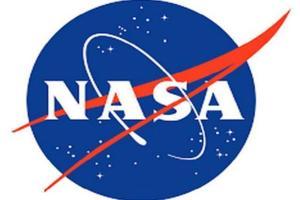Jupiter may be extremely dry compared to the Sun - a comparison based not on liquid water, but on the presence of its components, oxygen, and hydrogen

NASA logo. Pic/ANI
Water makes up about 0.25 percent of the molecules in Jupiter's atmosphere along its equator -- almost three times that of the Sun, according to a study based on data from NASA's Juno mission launched in 2011.
The study, published in the journal Nature Astronomy on Tuesday, provided the first findings on the gas giant's abundance of water since the space agency's 1995 Galileo mission.
According to the researchers, including those from NASA's Jet Propulsion Laboratory in the US, Jupiter may be extremely dry compared to the Sun - a comparison based not on liquid water, but on the presence of its components, oxygen, and hydrogen.
They said Jupiter was likely the first planet to form, and it contains most of the gas and dust that wasn't incorporated into the Sun. The leading theories about its formation rest on the amount of water the planet soaked up, the NASA scientists explained in a statement. Water abundance also has important implications for the gas giant's meteorology and internal structure, they said.
"Just when we think we have things figured out, Jupiter reminds us how much we still have to learn," said Scott Bolton, Juno principal investigator at the Southwest Research Institute in the US. "Juno's surprise discovery that the atmosphere was not well mixed even well below the cloud tops is a puzzle that we are still trying to figure out. No one would have guessed that water might be so variable across the planet," Bolton said.
Juno's Microwave Radiometer (MWR) observes Jupiter from above using six antennas that measure the atmospheric temperature at multiple depths simultaneously, NASA noted in a statement. The researchers said the MWR takes advantage of the fact that water absorbs certain wavelengths of microwave radiation, the same trick used by microwave ovens to quickly heat food.
According to the scientists, the measured temperatures are used to constrain the amount of water and ammonia in the deep atmosphere, as both molecules absorb microwave radiation. They initially concentrated on the equatorial region because the atmosphere there appeared to be more well-mixed, even at depth, than in other regions.
From its orbital perch, the radiometer was able to collect data from a far greater depth into Jupiter's atmosphere than the Galileo probe -- 150 kilometers, where the pressure reaches about 480 psi, the researchers said.
"We found the water in the equator to be greater than what the Galileo probe measured," said Cheng Li, a Juno scientist at the University of California, Berkeley. "Because the equatorial region is very unique at Jupiter, we need to compare these results with how much water is in other regions," Li said.
Catch up on all the latest Crime, National, International and Hatke news here. Also download the new mid-day Android and iOS apps to get latest updates
 Subscribe today by clicking the link and stay updated with the latest news!" Click here!
Subscribe today by clicking the link and stay updated with the latest news!" Click here!









